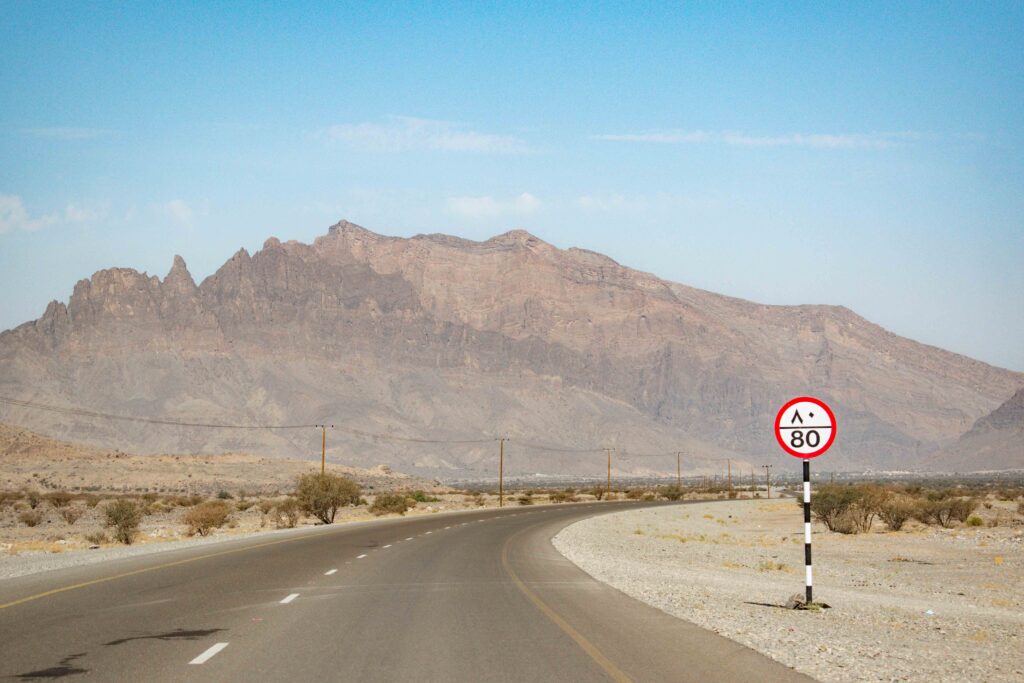
Oman is made for road trip adventures. Winding mountain passes, towering sand dunes, secluded white sand beaches, hidden natural pools of emerald water, and miles upon miles of empty highways. And despite the very expensive reputation of the Gulf, the endless wild camping opportunities offer just as exciting a prospect for the budget traveller, as for those looking for swish five-star luxury. On a road trip around Oman, you can get as off the beaten path as much or as little your comfort level allows.
These road trip itineraries are based on my experiences over several years of exploring Oman, and put together the routes I think offer the best highlights and the most enjoyable way to spend your visit. They are designed to give you the chance to see the best that northern Oman has to offer, but also at a pace that you can actually enjoy.
WHAT CAR DO I NEED – 4WD OR 2WD?
Essentially, this will come down to what you want to do, and how “off road” you want to get (check out my favourite off road routes for inspiration). It is perfectly possible to have a great road trip through Oman with a 2WD, but a 4WD will allow you to access some of Oman’s best camp sites and explore some of Arabia’s wilderness.
Have a look at my practical guide to all you need to know for a camping road trip around Oman, for more detailed advice on whether you need a 4WD or a 2WD.
Both itineraries below cover Oman’s natural highlights – mountains, wadis and deserts – and are designed to make the most of both a 2WD and a 4WD.
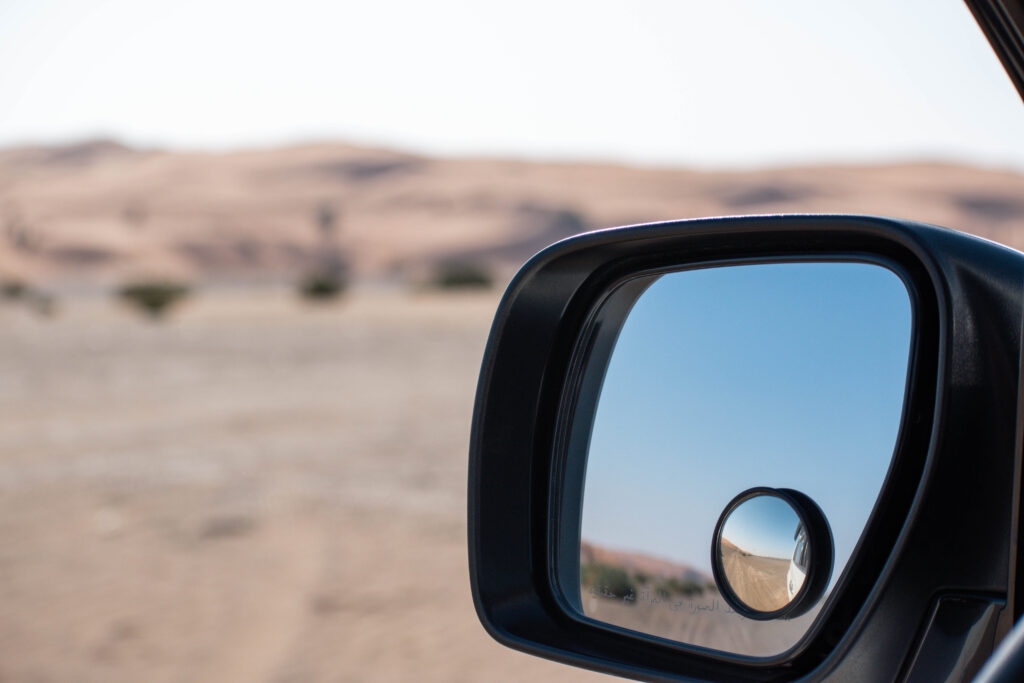
4WD & 2WD ROAD TRIP ITINERARIES
4WD Itinerary
Day 1 – Arrive Muscat. Explore Muttrah.
Day 2 – Wadi al Arbaeen and Fins
Day 3 – Wadi Shab and Salma Plateau
Day 4 – Beehive Tombs and Wahiba Sands
Day 5 – Ibra and Nizwa
Day 6 – Jabreen, Bahla and Tanuf
Day 7 – Al Ain, Wadi Damm and Jebel Shams
Day 8 – Wadi Bani Awf
Day 9 – Back to Muscat
2WD Itinerary
Day 1 – Arrive Muscat. Explore Muttrah.
Day 2 – Wadi Shab and Fins
Day 3 – Sur and Ras al Jinz
Day 4 – Wadi Bani Khaled and Wahiba Sands
Day 5 – Ibra and Nizwa
Day 6 – Jabreen, Bahla and Tanuf
Day 7 – Jebel Shams (or Al Ain)
Day 8 – Al Hamra and Misfat al Abryien
4WD OMAN ROAD TRIP ITINERARY
Total distance: 584 miles/940 km
This itinerary requires a bit of confidence driving off road, and a 4WD, but should not trouble most. If you haven’t done much 4WD driving before, be sure to familiarise yourself with the vehicle manual when you pick up your car. Key things to check are how to switch between different functions (for example, all wheel drive or a locked low gear), what each mode is optimised for, and tyre pressures in case you need to inflate/deflate for sand driving.
DAY 1
MUSCAT
Distance: minimal, city driving/taxi.
Almost all visits to Oman will start and finish at Muscat International Airport. Aim to arrive on an overnight flight to make the most of your first day in the Sultanate. Pick up your hire car and spend the morning picking up all the supplies you will need to set off on your road trip. Check out my practical guide to a camping road trip in Oman for more advice on camping kit and food and drink options.
Mid afternoon head over to Old Muscat to visit the National Museum and see the Sultan’s Palace to set the context for your Omani adventure. Afterwards, head a little bit further along the coast to Muttrah, to visit the Fort, walk along the Corniche, explore the souq and perhaps taste your first traditional Omani dinner at Bait al Luban overlooking the harbour.
Accommodation: overnight in a Muscat hotel. Check out my guide to Muscat for suggestions, or have a look at my full reviews of The Chedi or the Al Bustan Palace for a seriously luxurious start to your trip. The Royal Tulip and Levatio Suites are my top picks for a mid range option.
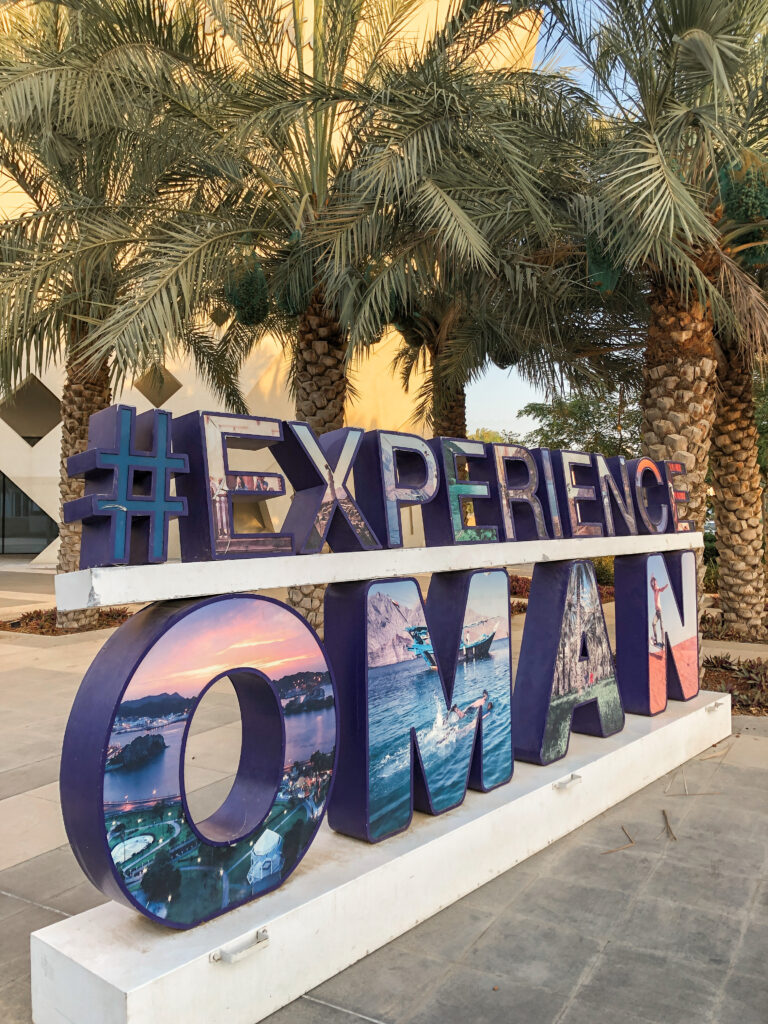
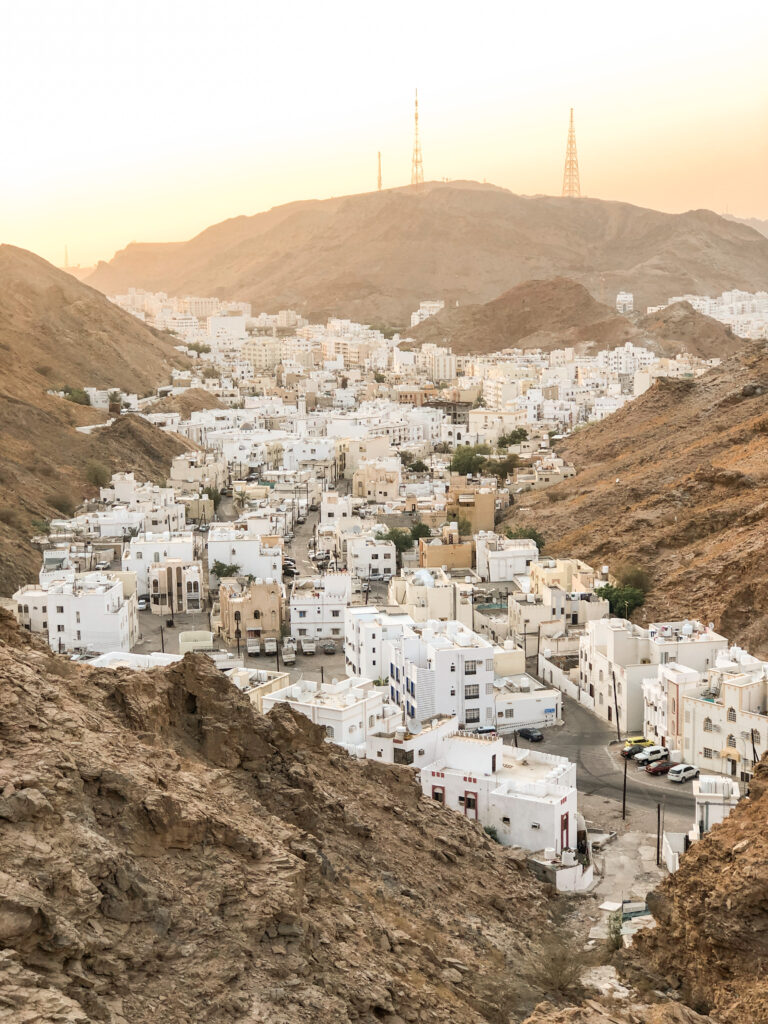
DAY 2
MUSCAT TO FINS, VIA WADI AL ARBAEEN
Distance: 106 miles/172 km
Wadi Al Arbaeen is a popular weekend day trip for Muscat residents, but features far less frequently on visitors’ itineraries. It is possibly my favourite wadi in Oman!
The details of the driving route are in my selection for the top picks for off road adventures in Oman. After several hours exploring the emerald pools, head back out to the highway along the wadi road and drive south – with a possible extra stop at the insta-famous Bimmah Sinkhole – and on to the cliff tops between Bimmah and Fins Beach.
Accommodation: camp along the cliffs tops between Bimmah and Fins – just watch out for the blow holes! At night you will often see bioluminescent algae glittering in the water along this coast. Check into the lovely Wadi Al Arbeieen Resort if you prefer hotel accommodation (this will add about 25 miles/40km to the Day 3 drive).
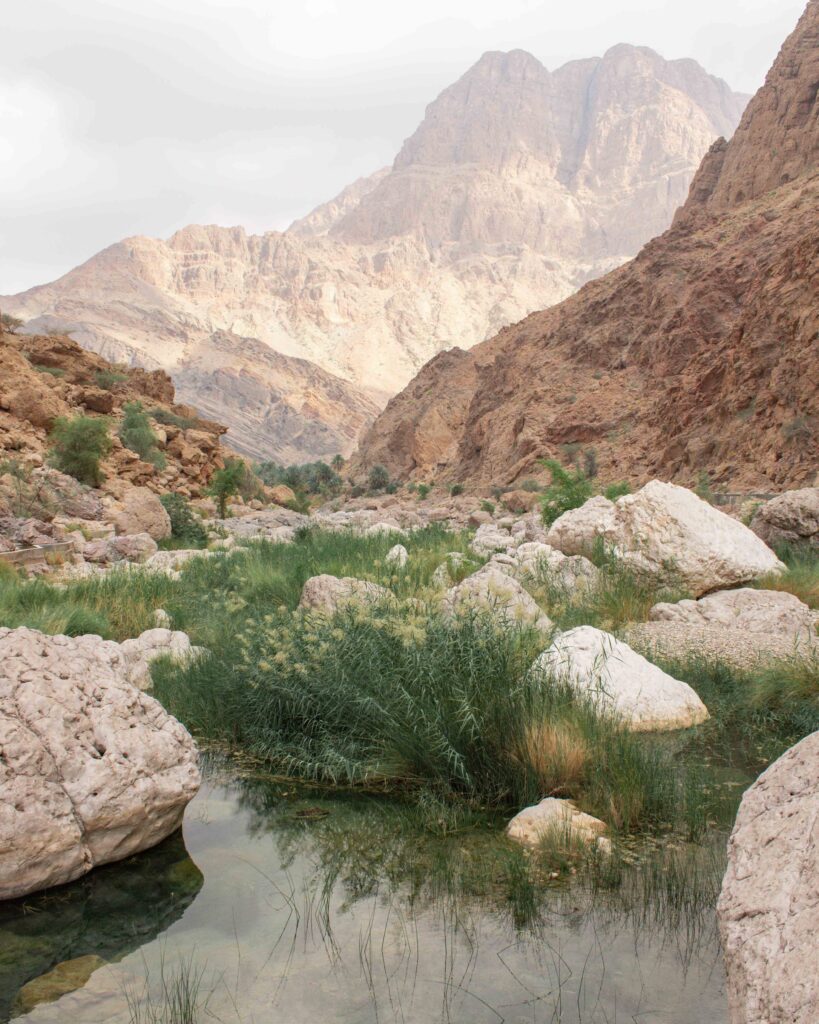
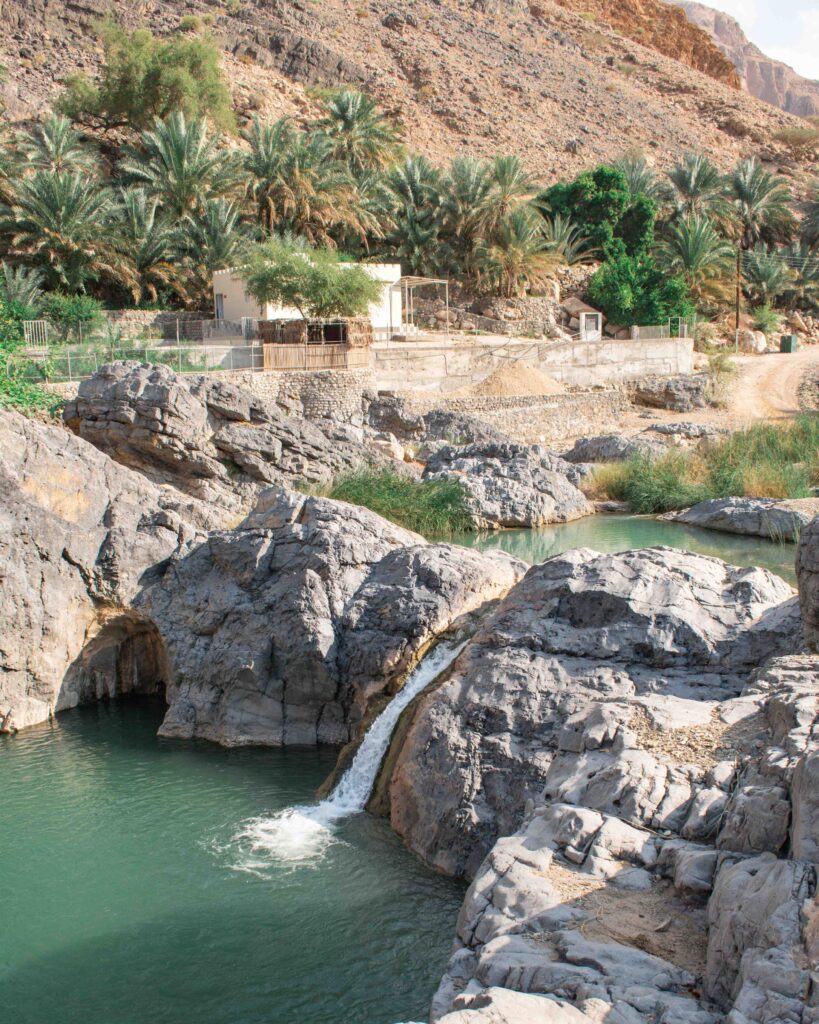
DAY 3
FINS TO SALMA PLATEAU
Distance: 25 miles/40 km
Get up early to arrive at Wadi Shab for the first boat across the river at 8am to beat the crowds. After a straightforward hike of around 45 minutes, there are a series of interlinked turquoise pools to swim in. After a morning exploring the pools and hidden waterfall, head back inland to drive one of Oman’s best off road routes, up onto the Salma Plateau. Find a detailed description of the route in my selection for the top picks for off road adventures in Oman.
This is a less frequented route, with some fairly steep off road sections. But the road itself is fairly good, so it is more intimidating than technical off road driving. Make sure that you are well prepared and feel confident before embarking upon this route. There are no places to get fuel, or food/water on the Plateau. If you do not feel comfortable attempting this route, I suggest instead heading south to Ras al Jinz as in the 2WD itinerary below. You could also replace Wadi Shab with the more adventurous Wadi Tiwi (4WD only).
Accommodation: Camp on top of the Plateau for a night of some of the best star gazing you can imagine. There are no hotel options on the Plateau.
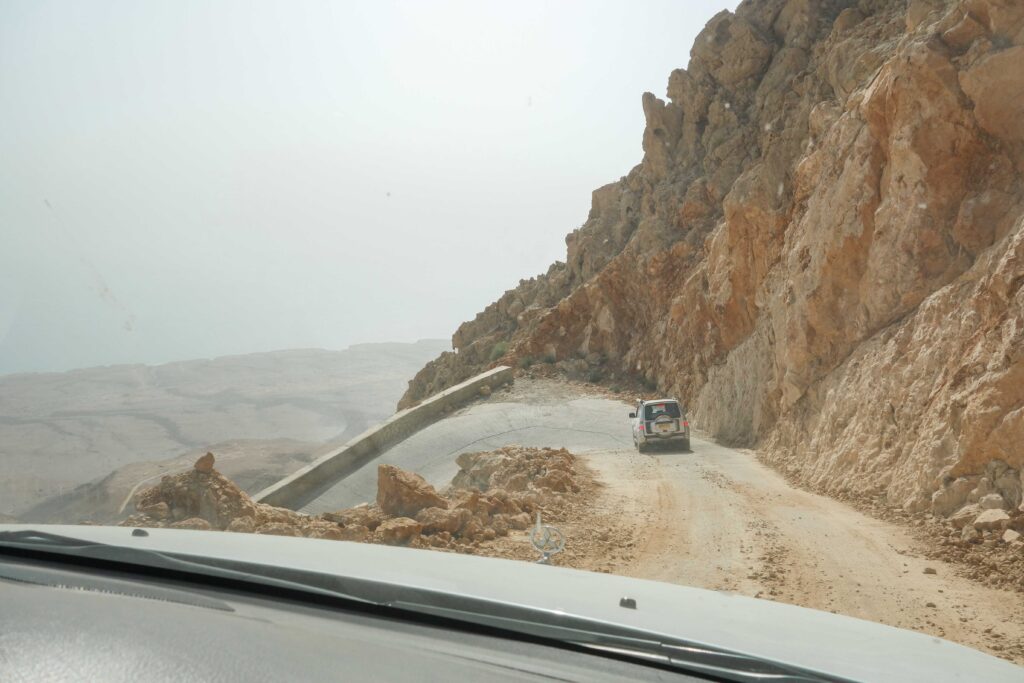
DAY 4
SALMA PLATEAU TO WAHIBA SANDS
Distance: 63 miles/101 km (plus additional distance into dunes)
After breaking camp, visit the mysterious Beehive Tombs. These structures date from about 2000 to 2700 BCE. Afterwards, begin your descent from the Salma Plateau and towards the golden dunes of Wahiba Sands. The coordinates for the route are described in my off road guide.
If you are up for more driving, you could add a visit to Wadi Bani Khaled before heading to the desert. Be sure to explore the pools further up the wadi, above the large, first – and well developed – pool you come to after parking up.
Accommodation: if you are travelling as one vehicle and wish to wild camp in the Wahiba desert stick to the compacted sand track leading into the desert, and camp not far from of this, to reduce your risk of getting stuck. Sand driving is very different to off roading on more rocky ground – be sure to do your research if you plan to head into the desert by yourself. Have a look at my guide to camping in the desert for top safety tips.
Alternatively, book into one of the fixed desert camps and arrange for an escort to meet you at one of the petrol stations in Bidiyah to escort you across the dunes. The camps will also arrange pick up in their own vehicles, if you are apprehensive about driving across the sands yourself. Have a look at my review of Thousand Nights Camp for more idea of what the fixed camps are like.
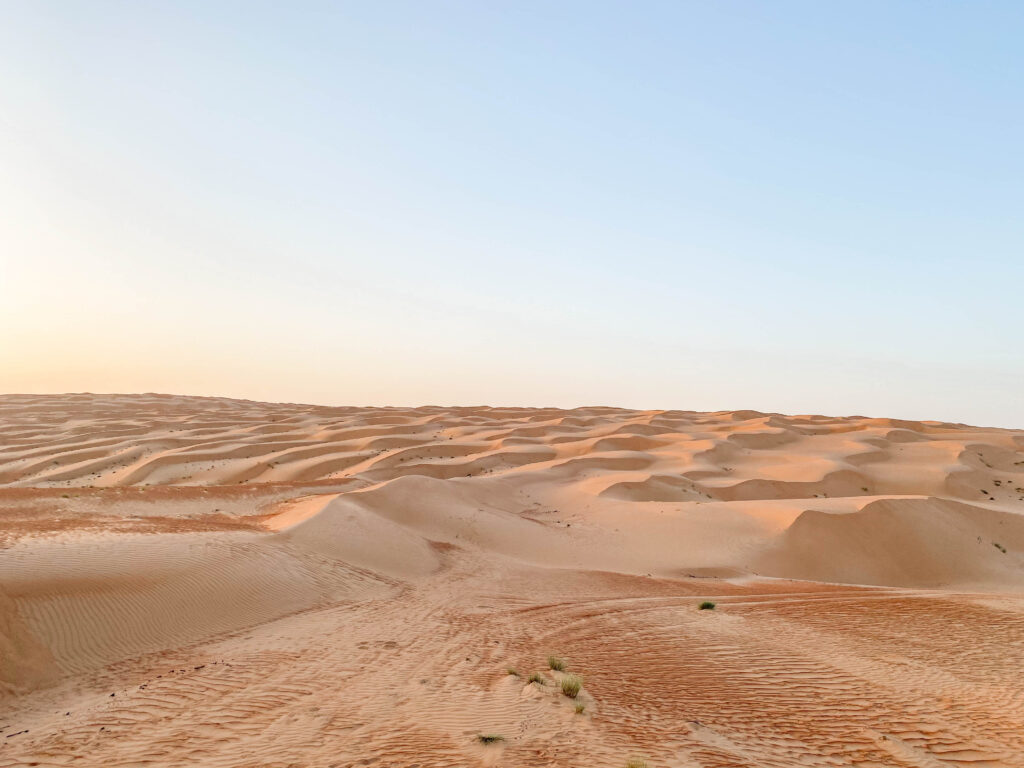
DAY 5
WAHIBA SANDS TO NIZWA
Distance: 113 miles/183 km (plus distance from desert camp back to highway)
After waking up in one of Oman’s most iconic landscapes – the dunes – it is time to head to another – the mountains of the Western Hajar and Oman’s former capital, Nizwa.
You might want to visit Ibra Old Quarter on the way to Nizwa. It was once a highly wealthy stop on the lucrative trade routes that crossed Arabia. There are two main areas to explore – Al Munisifeh and Al Kanatar – which were the centres of two different family groups. I recommend Al Munisifeh if you are only visiting one, as the structures are more intact, with some amazingly intricate architectural details still visible.
Park outside the arches (navigate to Ibra Souq, then follow the road signs) and explore on foot. Just be careful and use your judgement – the ruins are only lightly maintained, so not all are structurally sound.
Allow about an hour to explore Ibra Old Quarter, and then drive north to Nizwa.
Aim to arrive in Nizwa in time to visit Nizwa Fort in the late afternoon sunshine, when the walls glow golden. Head to the souq after an hour or so exploring the Fort.
There are large hypermarkets in Ibra (Lulu’s) and Nizwa (Carrefour and Lulu’s) if you need to stock up on supplies.
Accommodation: I recommend staying at a guesthouse whilst in Nizwa, as most of the sights you want to see this afternoon and tomorrow are in town. Have a look at my quick review of the Nizwa Antique Inn for my favoured option. If you want to camp, try exploring the flatter area tucked into the foothills of the Hajar, to the west of the town centre.
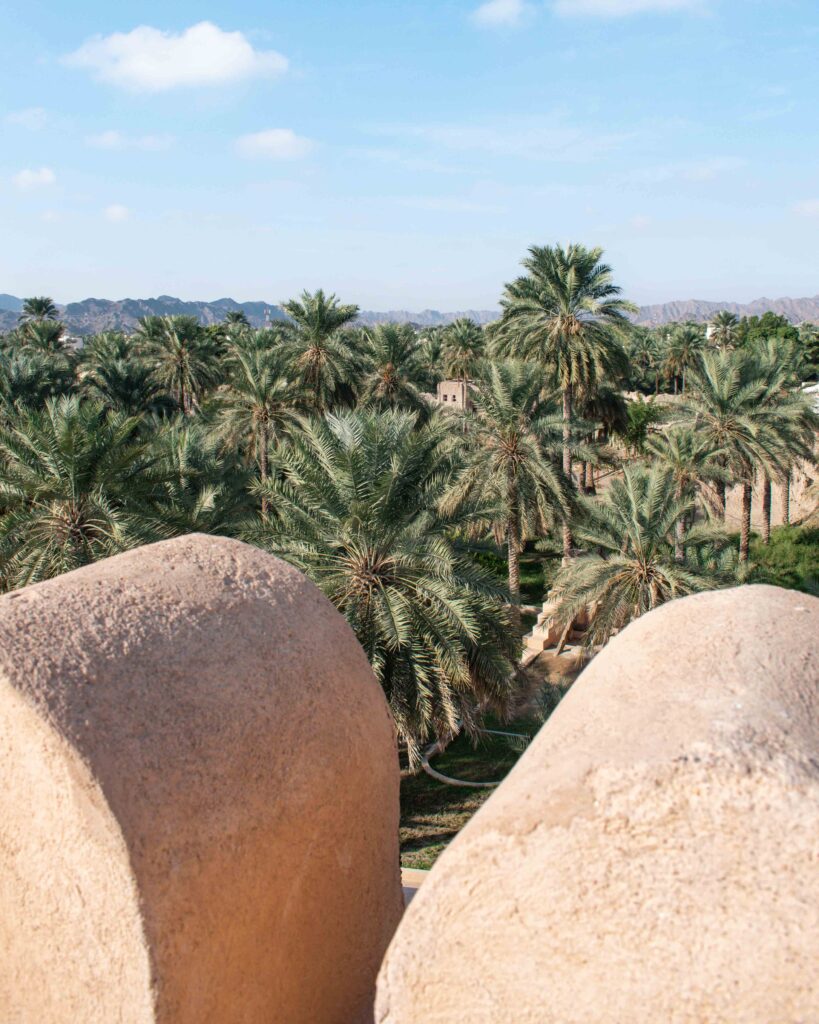
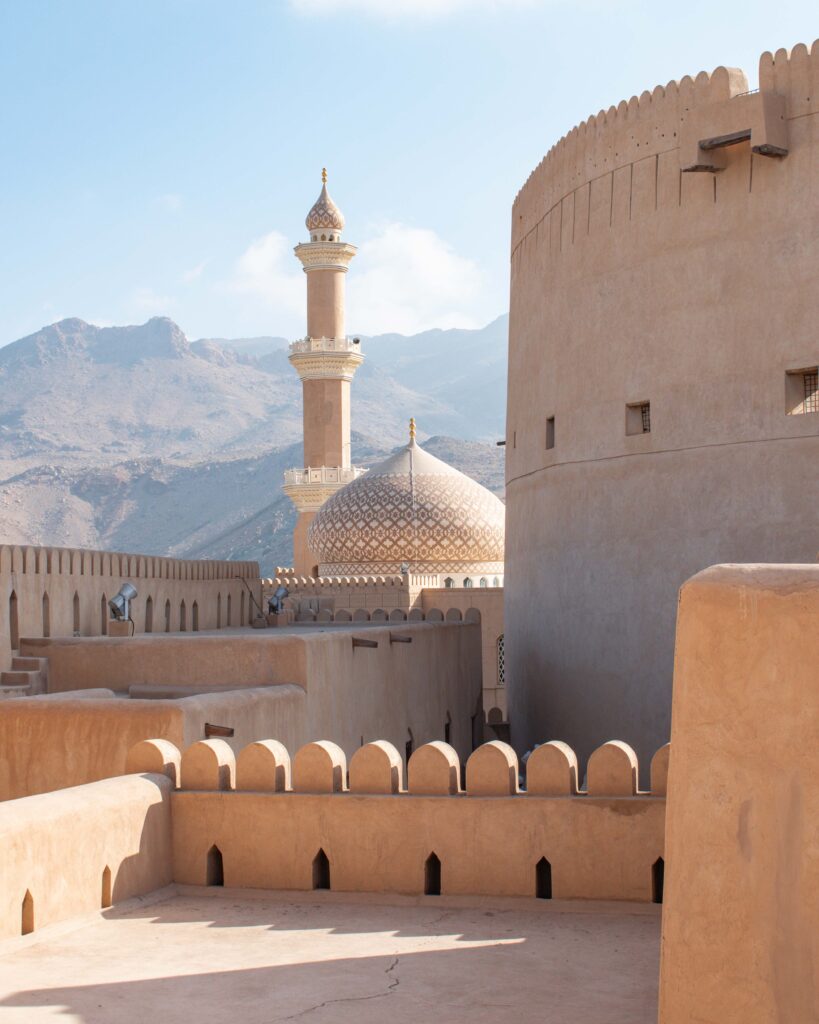
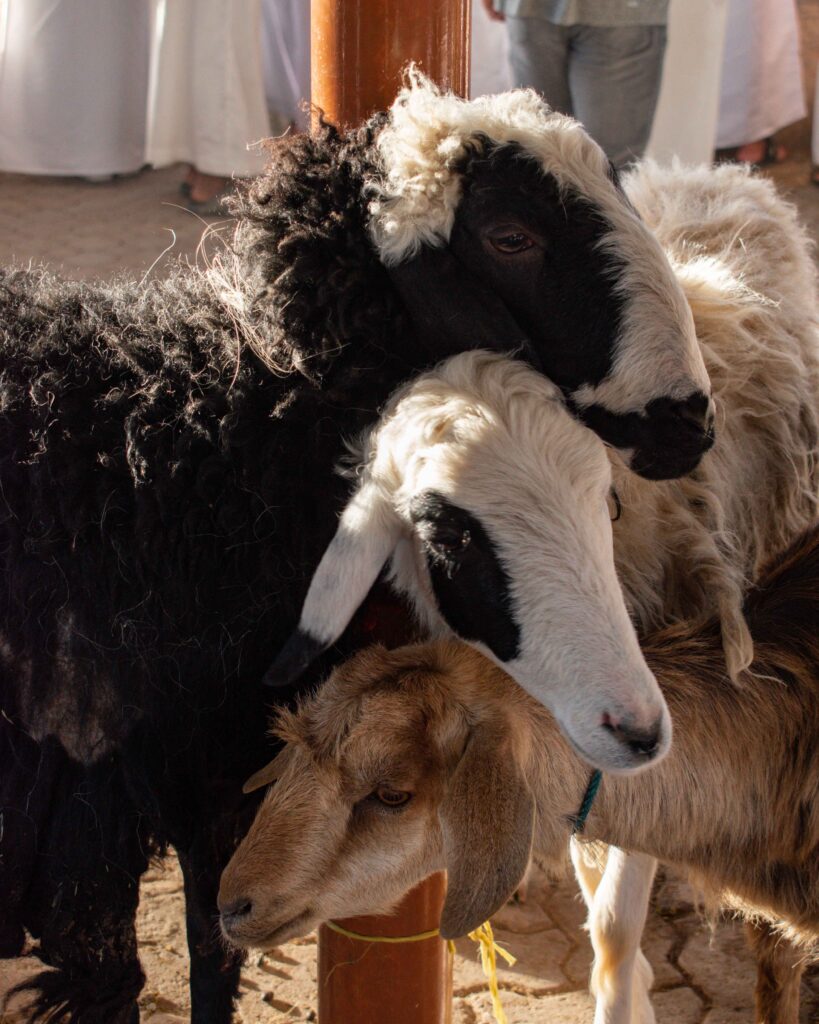
DAY 6
JABREEN, BAHLA AND TANUF
Distance: 62 miles/100 km (if visiting all three forts and ruins, and returning to Nizwa)
If you are in Nizwa on a Friday morning, pay a visit to the lively goat market, held close to the souq.
Today is the day to explore the Sultanate’s history. Bahla Fort, Jabreen Castle and the ruins of Tanuf are all within easy reach of Nizwa and showcase different eras of Oman’s past. The three sites are close enough to squeeze all three into a single a day, but if you want a slightly slower pace – or think that fort overload! – I recommend:
- Jabreen Castle for intricate interiors and restored rooms for a glimpse of life in an 17thC Omani fort;
- UNESCO-recognised Bahla Fort for its sheer size and towers to clamber for views over the surrounding landscape; or
- Tanuf ruins for a visual reminder of the Jebel Akhdar Wars of the 1950s – the village was abandoned during fighting and as power and wealth moved more definitively to the coastal areas.
Read a more about the history of the interior of Oman in my guide to the Western Hajar.
If exploring the ruins of Tanuf, you might want to add an additional off road drive to explore the wadi up to the village of Ad Dhahir. It is a short (approx. 5 miles/8km each way) off road drive, requiring a number of river crossings depending on how much water there is in the dam. Stay aware of the depth of the water, and be sure to turn back before you get stuck! The falaj (traditional water irrigation system) that runs alongside the wadi, is one of the oldest in the Nizwa area.
Accommodation: I recommend finishing up your day at Tanuf, and exploring either side of Wadi Tanuf, behind the ruins for tonight’s camp spot. The wadi is dammed about 1km north of Tanuf, and there are a number of flatter areas just off the small road that leads to the village of Ad Dhahir, suitable for camping. Look for areas of high ground well above the wadi bed, to avoid the dangerous flash flooding risk.
For hotels and guesthouses, your most convenient location is Nizwa so you might want to consider staying at the same place that you chose for night 5, for a slightly more relaxing pace in the middle of your trip. This adds about 15 miles/25 km onto tomorrow’s drive.
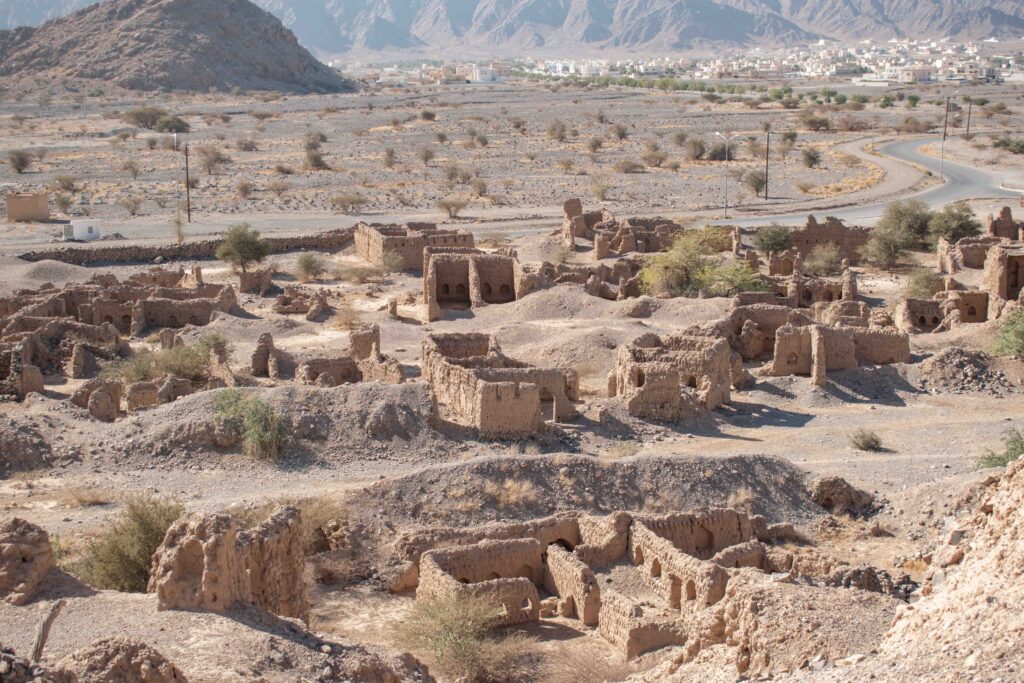
DAY 7
AL AIN, WADI DAMM AND JEBEL SHAMS
Distance: 72 miles/116 km
From Tanuf, make your way back to Highway 21 and head to the Beehive Tombs of Al Ain. These tombs date from the 3rdC BCE, and are a UNESCO World Heritage Site. They are in amazing condition, with wonderful views against the backdrop of the dramatic Jebel Misht.
Heading on from Al Ain, it is around 14km to the start of Wadi Damm. Drive as far as you can into the wadi, parking up as close as you can get. Pack your swimming costume and cross the small dam, to walk into the wadi and find the emerald pools. It is around 30 minutes to the first pool, and about an hour to the most beautiful, fringed by moss and ferns. Keep to the left of the pools and you will come to a set of large boulders which looks like a dead end. There is a rope to help you climb through the gap in the rocks to reach the pools beyond. This looks challenging but is very manageable – although might be a bit tricky if you are very claustrophobic. Allow several hours to explore the wadi.
From Wadi Damm, follow the great off road route up to Oman’s highest peak – Jebel Shams. This is not a particularly difficult drive, but offers fantastic views all the way. The coordinates for the route are described in my off road guide.
Accommodation: Tonight offers possibly the best camping in Oman. Set “Jebel Shams Viewpoint 3” into your navigator, and find somewhere along the edge of the canyon to park up for the night. There are multiple spots to choose from, all offering spectacular views into Wadi An Nakhur and across to the true summit of Jebel Shams (the highest mountain in Oman at 3000m). There are only a couple of hotels, but we have found them to be very disappointing. Given how amazing the camping is, I really recommend sticking to your tent for this night’s sleep.
If you don’t want to camp, you might consider instead heading up to Jebel Akhdar for this night. Although it is a similar limestone formation, it is quite different to Jebel Shams. It is – especially in the spring and summer – much greener, with plantations carved into the mountainside for agriculture. It also has significantly more infrastructure than Jebel Shams, with multiple hotels in and around the town of Sayq on top of the plateau. The most luxurious picks are the famous Anantara Jebel Akhdar and (my favourite) Alila Jebel Akhdar. For equally good views, but at more affordable rates check out Sama Jebel Akhdar.
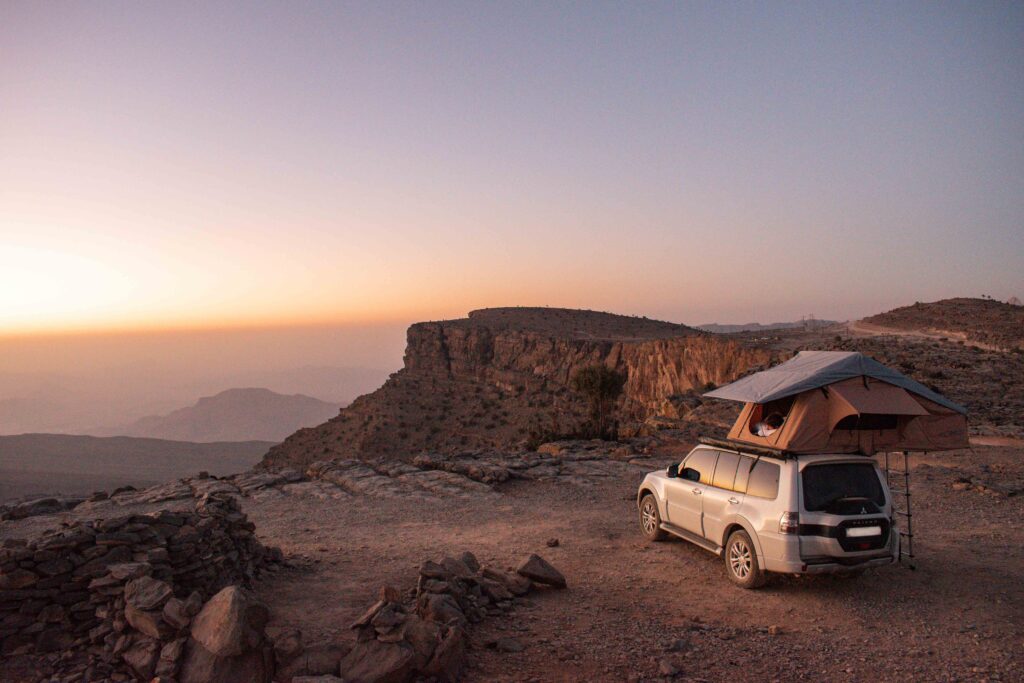
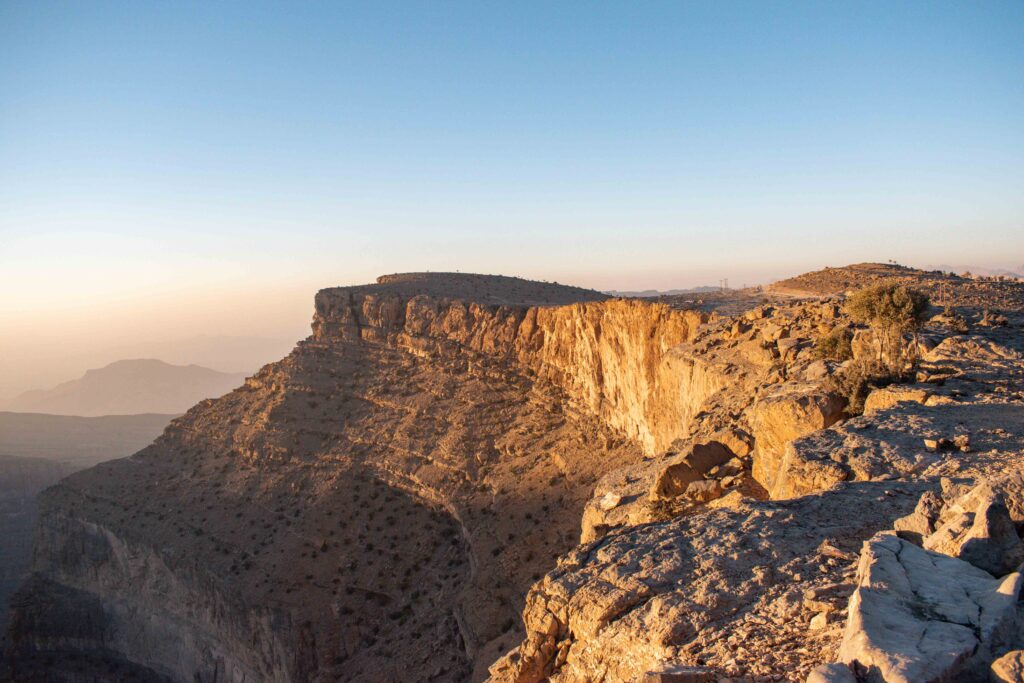
DAY 8
WADI BANI AWF
Distance: 50 miles/82 km
Start off your day with one of Oman’s best hikes – the Balcony Walk. Aim to start early (by 8am), both to beat the crowds and also the heat on this exposed route. Allow around 3-4 hours for the full walk.
After descending Jebel Shams it is now time to cross the Western Hajar. The Wadi Bani Awf pass is the most serious off road drive of this itinerary – it is dusty, very steep and very narrow in places so be sure you are feeling confident before attempting it! The coordinates for the route are described in my off road guide (although you will be doing it in reverse to the route described there).
There are multiple adventures to choose from if you want a more active exploration of this area – in particular the popular Snake Canyon and Little Snake Canyon. The start of Little Snake Canyon can be explored independently, but Snake Canyon is a serious expedition only to be attempted with a professional guide or in an organised group. Heading into this beautiful wadi requires a day canyoning, with ropes, climbing kit, and a head for heights. Expect multiple abseils and leaps off high rocks into the water pools to traverse the wadi. Try Huusak Adventures for guides and organised trips.
Accommodation: Choose your camp spot very carefully – the risk of flash flooding is very real. Sadly, a number of people have been killed in recent years after getting caught in adverse weather. There are a number of good areas to camp, set back off the road in a small, tree shaded valley, very close to the start of Snake Canyon. Try out the nearby Bait Bimah for basic, guesthouse accommodation.
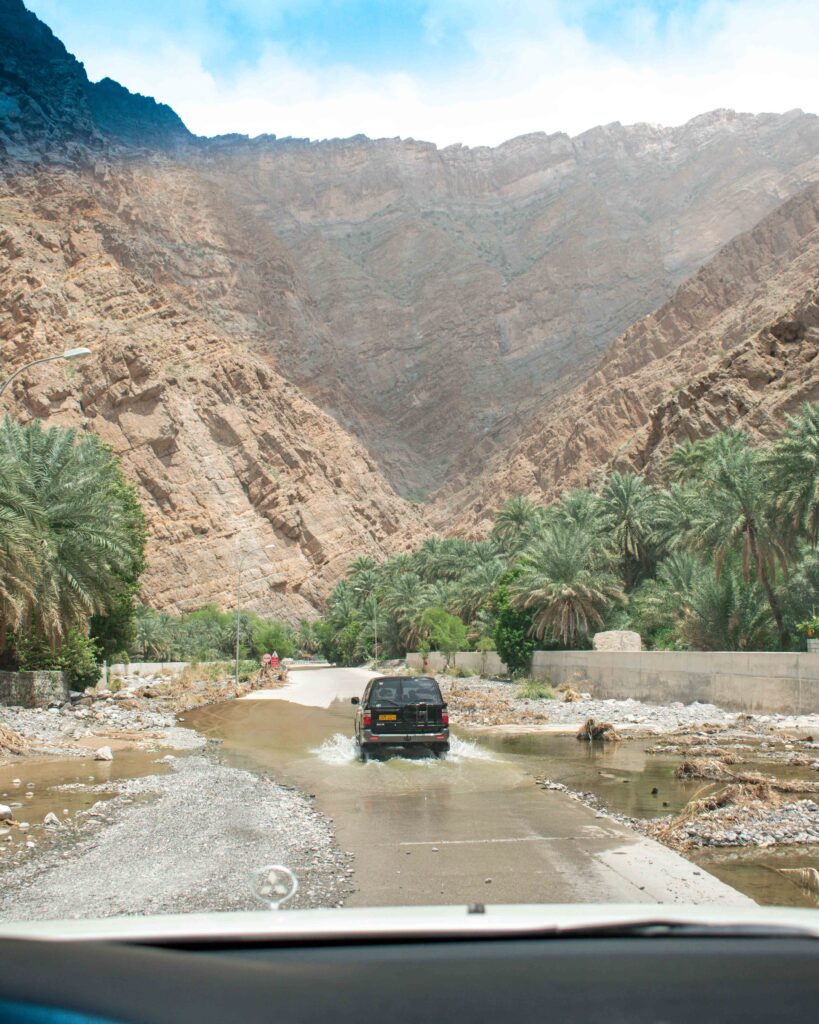
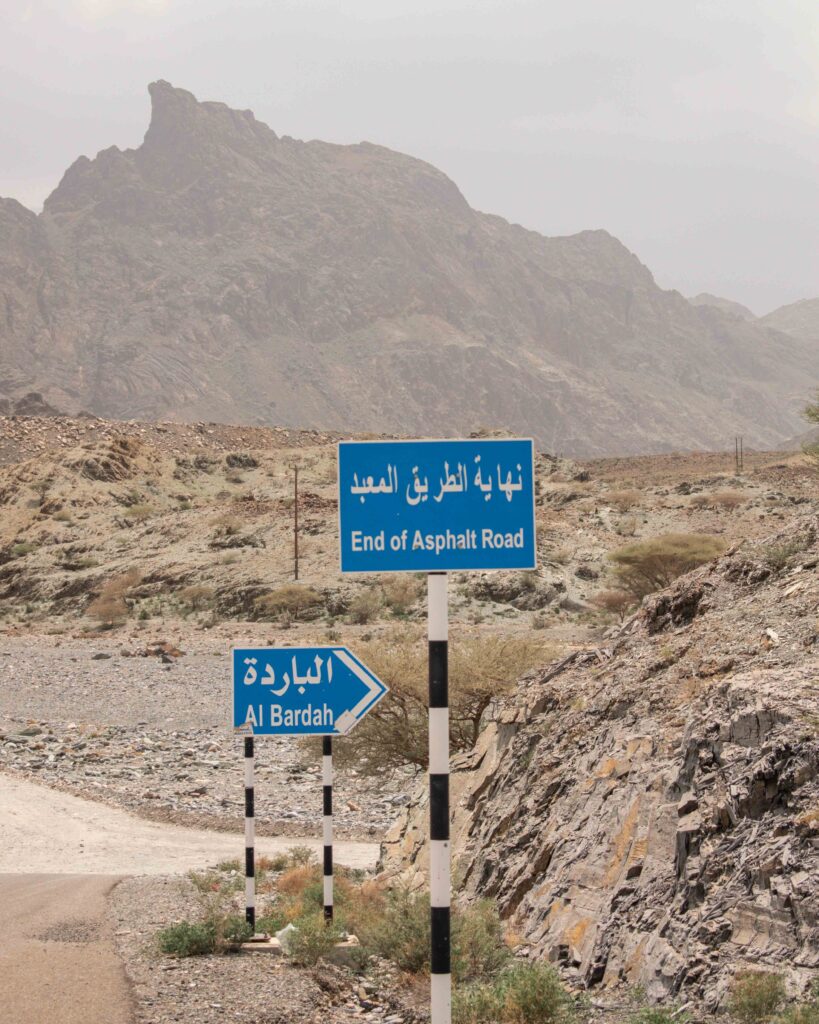
DAY 9
BACK TO MUSCAT
Distance: 93 miles/150 km
To head back to Muscat, continue along the route described in my off road guide. Descend down the other side of the Western Hajar and onto Highway 13 to head back to the capital for your final night in Oman.
Accommodation: final overnight in a Muscat hotel. Consider treating yourself to a night in the luxurious The Chedi or beachfront Al Bustan Palace for the ultimate splurge to end your trip on a luxurious high! The Royal Tulip and Levatio Suites are the best picks if you are on a tighter budget, but still want to finish your trip in comfort.
DAY 10
MUSCAT
Distance: minimal, city driving.
For your last day in Muscat, visit the beautiful Sultan Qaboos Grand Mosque before an afternoon or evening flight home. Note that the Mosque is closed to non-Muslims on Fridays, so depending on your travel days you may wish to add an extra day in Muscat at the start of your trip to visit instead.
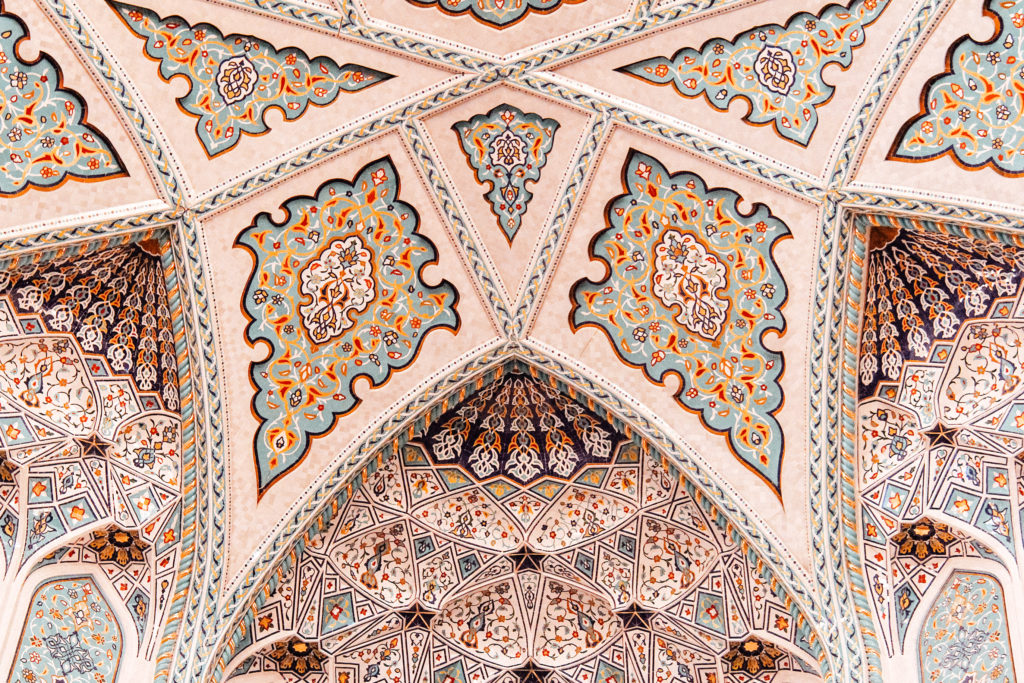
2WD OMAN ROAD TRIP ITINERARY
Total distance: 671 miles/1079 km
This trip is well sign posted throughout, and mostly on tarmac roads. However, there are a few sections that are unpaved so make sure you are comfortable with that. It is best to choose a rental car with as much ground clearance as possible, especially if you want to camp.
DAY 1
MUSCAT
Distance: minimal, city driving.
As in the above 4WD itinerary, arrive into Muscat in the morning and spend the day stocking up on road trip supplies, and exploring Old Muscat and Muttrah.
Accommodation: overnight in a Muscat hotel. Check out my guide to Muscat for suggestions, and favourite picks above in the 4WD itinerary.
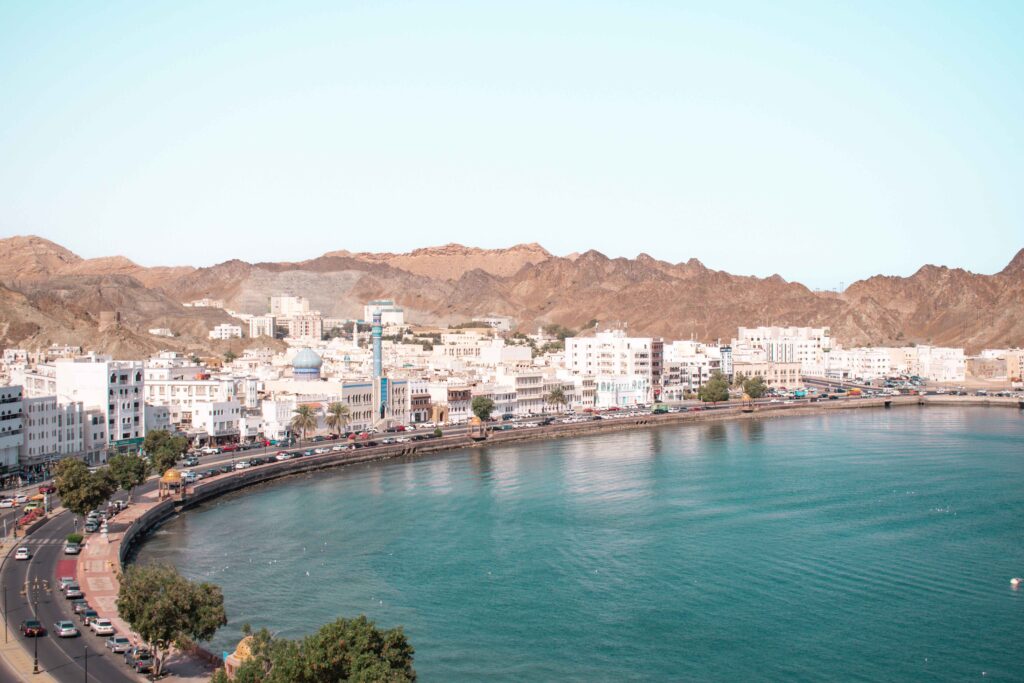
DAY 2
MUSCAT TO FINS
Distance: 92 miles/148 km
Head out of Muscat and down Highway 17 towards Sur. Stop off at the photogenic Bimmah Sinkhole before heading to swim in the famous turquoise pools of Wadi Shab. Check out my guide to this stretch of coastline for the details on making the most of these two watery delights.
Accommodation: Camp along the cliffs tops between Bimmah and Fins – just watch out for the blow holes! At night you will often see bioluminescent algae glittering in the water along this coast. Decent hotel accommodation is very limited on this stretch of coast. Try the Wadi Shab Guesthouse for a clean, comfortable night’s stay and beach views.
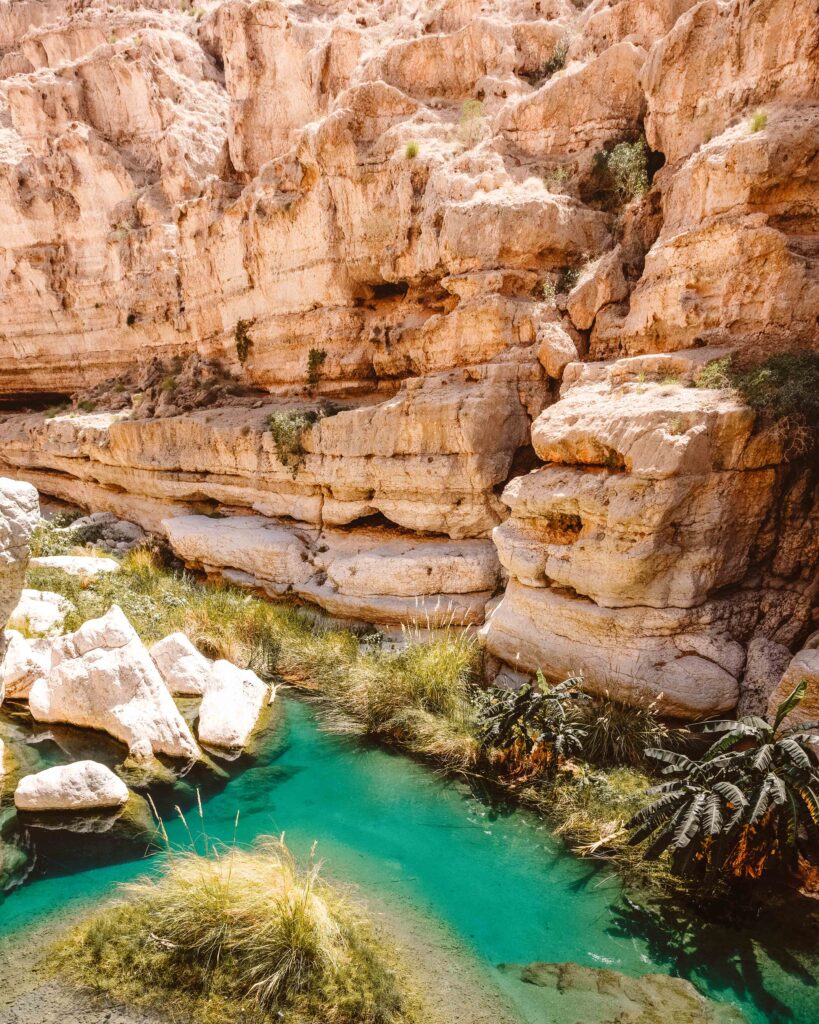
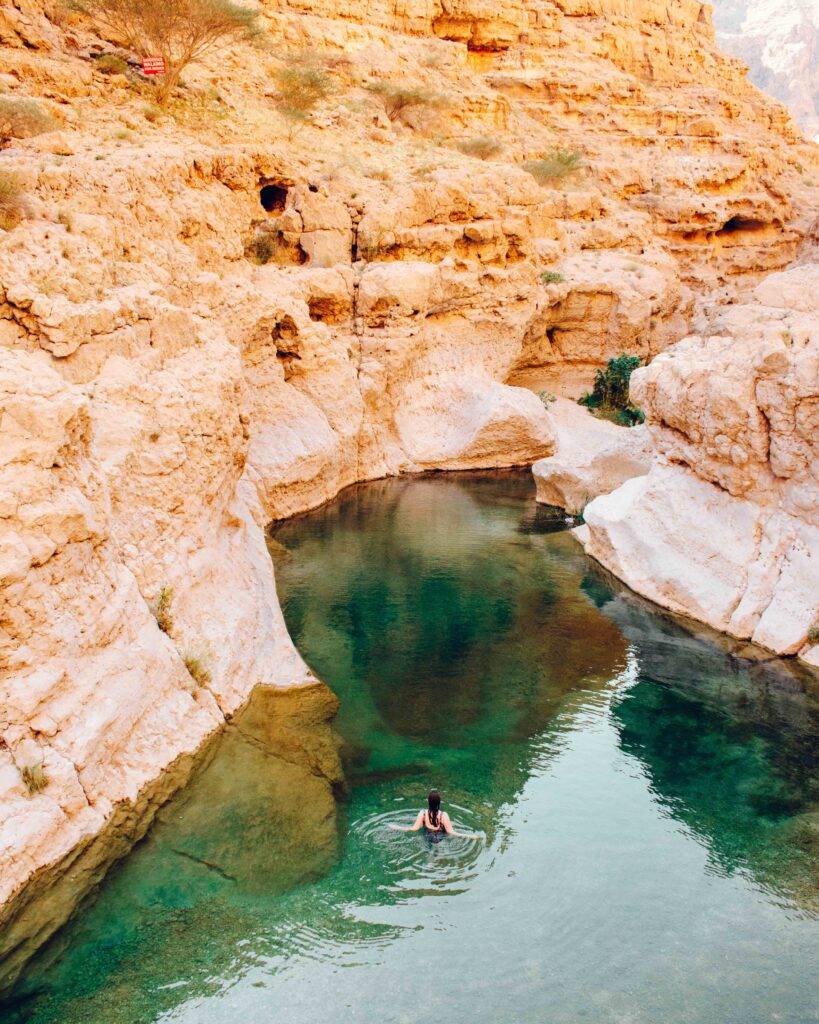
DAY 3
FINS TO RAS AL JINZ
Distance: 66 miles/107 km
After departing camp mid morning – perhaps after a quick dip in the sea – head back onto Highway 17 to drive south east. Stop for lunch in the port town of Sur, and spend an hour or two exploring its sights. Sur was once the centre of Oman’s colossal maritime power, at a time that the Omani empire extended all the way down the east coast of Africa to Mozambique and across the Gulf into Iran. It is also one of the two rumoured homes of the mythical sailor Sindbad – the second being the town of Sohar just north of Muscat.
Around 45 mins further south from Sur is Ras Al Jinz. This small fishing village is one of the most important Green Turtle – an endangered species – nesting areas in the world, and this environment is essential to their survival. In 1996 the Omani government turned a 45km stretch along the coastline into a reserve, to protect the beach and the turtles.
Evening tours depart between 8.30pm and 9pm depending on the season, and the morning excursion heads to the beach between 4.30am and 5am. You are pretty much guaranteed to always see at least one or two turtles on any given tour, but peak nesting season is May – September.
Accommodation: As tempting as the beaches look around Ras al Jinz, please do not camp. These are protected areas to preserve the turtle’s nesting grounds. The Ras Al Jinz Reserve has a choice of permanent tents and basic hotel style rooms in the main building, and put you right on site for the morning turtle walk. Rooms are rather pricey – you are paying for proximity to the turtles – so if you want a more affordable option, check out the comfortable SAMA Ras Al Jinz Resortabout 3 miles/5 km back up the road.
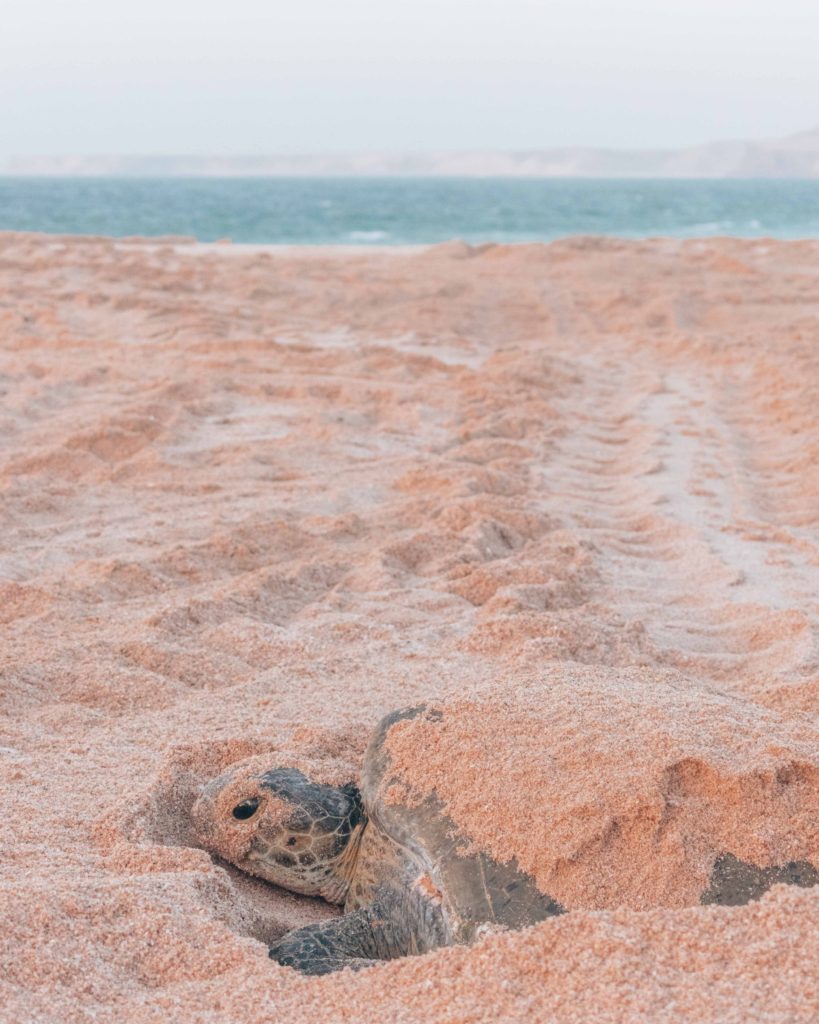
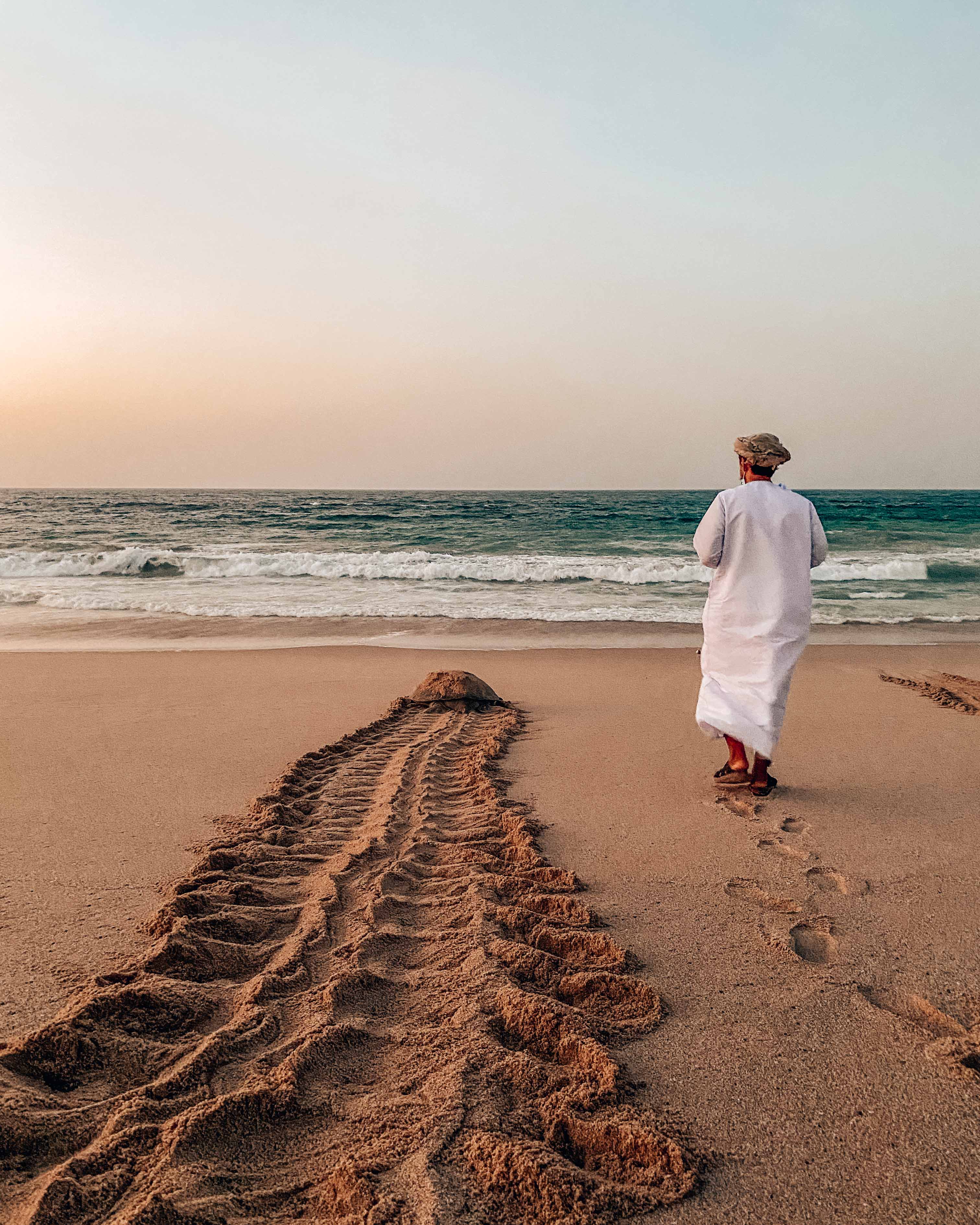
DAY 4
RAS AL JINZ TO WAHIBA SANDS, VIA WADI BANI KHALED
Distance: 128 miles/207 km
After very early start to join on of the Reserve’s turtle walks, head back towards Sur before turning south on to Highway 23 and making for the desert.
Before you get there, make a detour for a few hours splashing about at Wadi Bank Khaled. Be sure to explore the wonderful pools further up the wadi, above the large, first – and well developed – pool you come to after parking up.
With a 2WD, you will not be able to travel independently to the Omani desert, but waking up amongst the dunes is an experience you simply can’t miss. Book a stay at one of the fixed desert camps and arrange to be collected from one of the towns on the edge of Wahiba – most likely Bidiyah.
Accommodation: The majority of Wahiba’s fixed desert camps offer a variety of tented structures, restaurants and even swimming pools. There are a number of suggestions for which to choose in my guide to Oman’s deserts – or have a look at my review of Thousand Nights Camp for a more detailed recommendation.
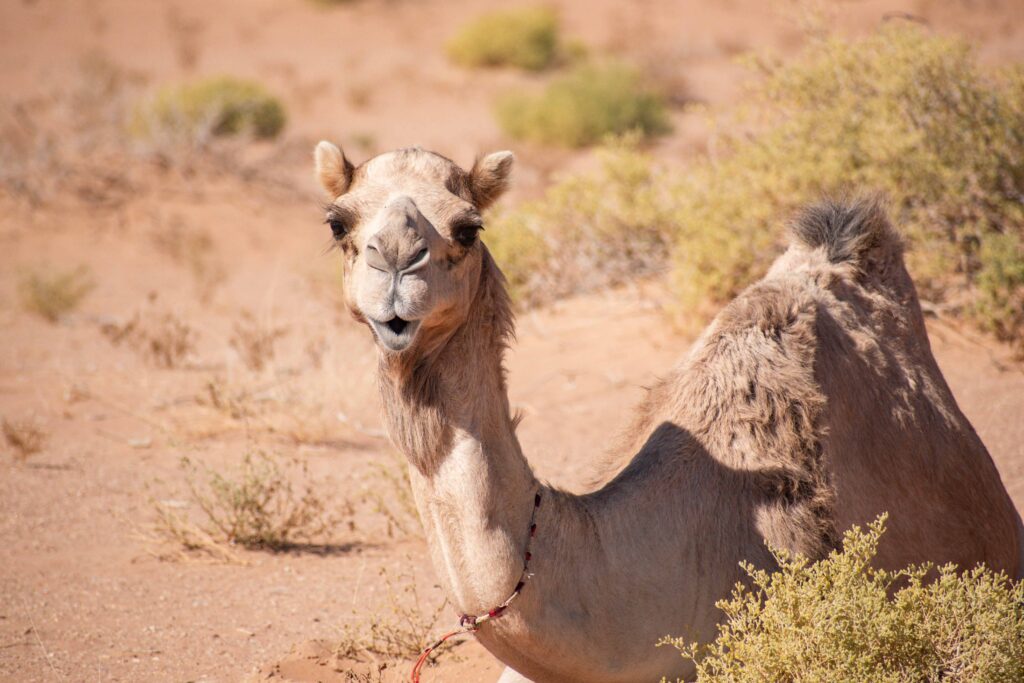
DAY 5
WAHIBA SANDS TO NIZWA
Distance: 113 miles/183 km
As above on the 4WD itinerary, depart the desert to head to the former capital of Oman, Nizwa. On the way, you might want to stop to explore the ruins of Ibra’s Old Quarter, before visiting Oman’s most frequented sight – Nizwa Fort – in the late afternoon golden glow.
Accommodation: I recommend staying at a guesthouse in Nizwa – have a look at my quick review of the Nizwa Antique Inn for my favoured option in Nizwa (and for a comparison with a few of the other choices). Alternatively, if you prefer to camp, explore the flatter area tucked into the foothills of the Hajar, to the west of the town centre.
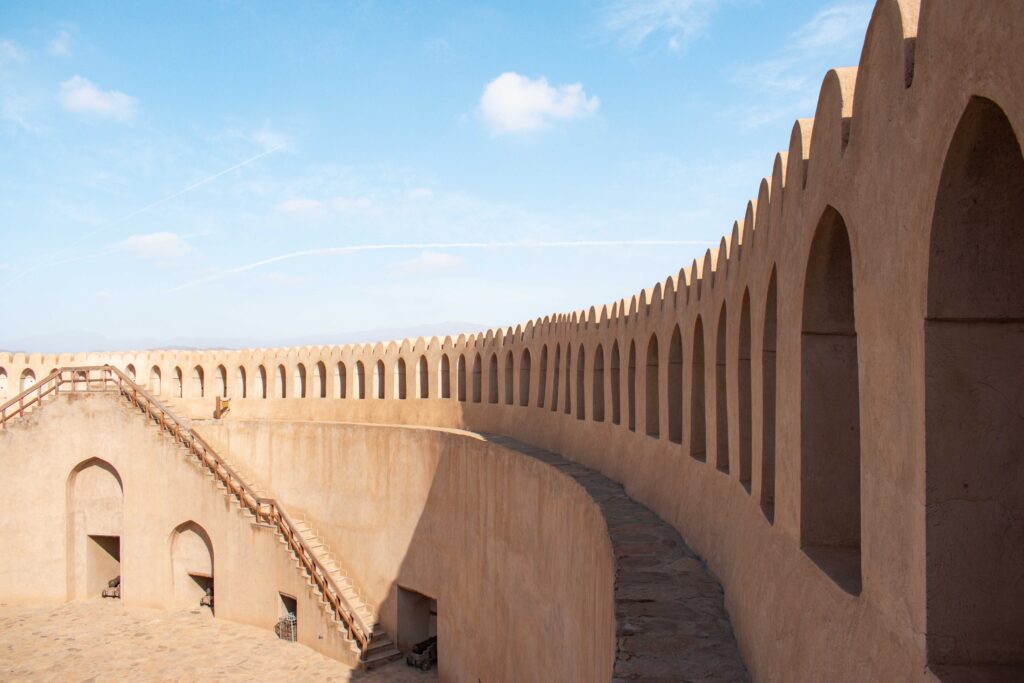
DAY 6
JABREEN, BAHLA AND TANUF
Distance: 62 miles/100km (if visiting all three forts and ruins, and returning to Nizwa)
As above on the 4WD itinerary, visit the Nizwa goat market if you are in town on a Friday. Then take your pick from the forts of Jabreen and Bahla, and the ruins of Tanuf to spend the day exploring Oman’s past.
Accommodation: I recommend finishing up your day at Tanuf, and exploring either side of Wadi Tanuf, behind the ruins for tonight’s camp spot. This track is suitable for 4WDs only further into the wadi, but there is a small picnic area accessible to 2WDs that you may find suitable for camping. Be sure to pick an area of higher ground well above the wadi bed, to avoid the dangerous flash flooding risk.
For hotels and guesthouses, your most convenient location is Nizwa so you might want to consider staying at the same place that you chose for night 5, for a slightly more relaxing pace in the middle of your trip.
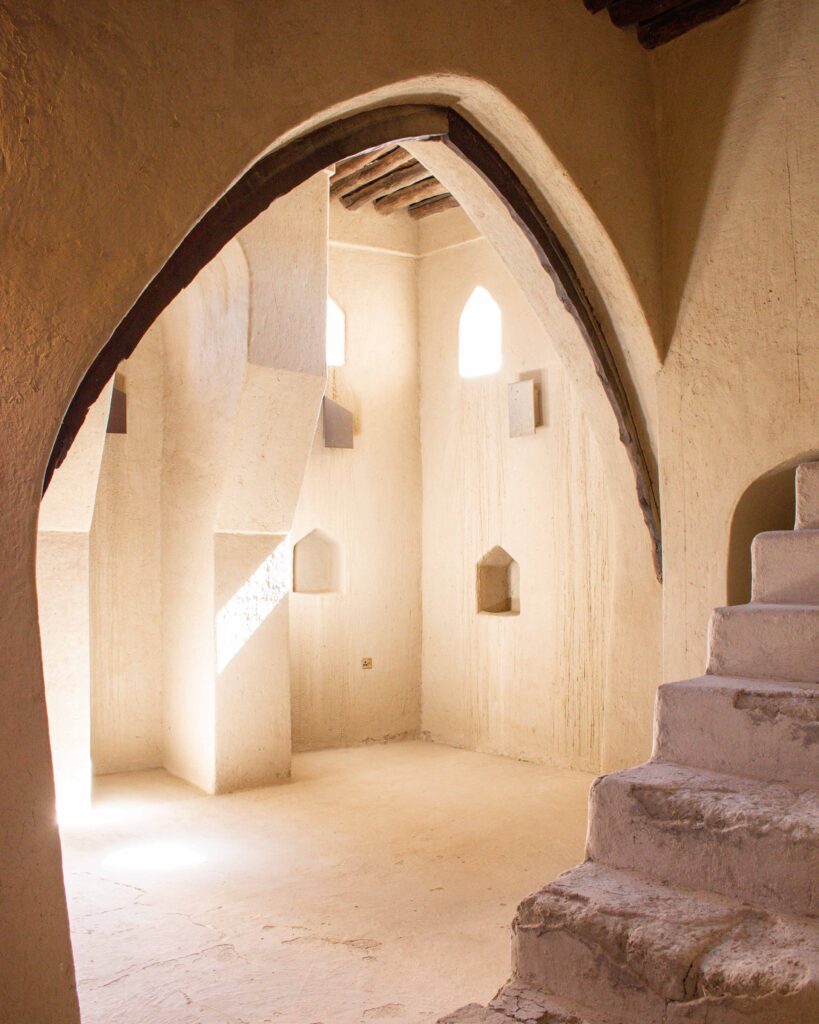
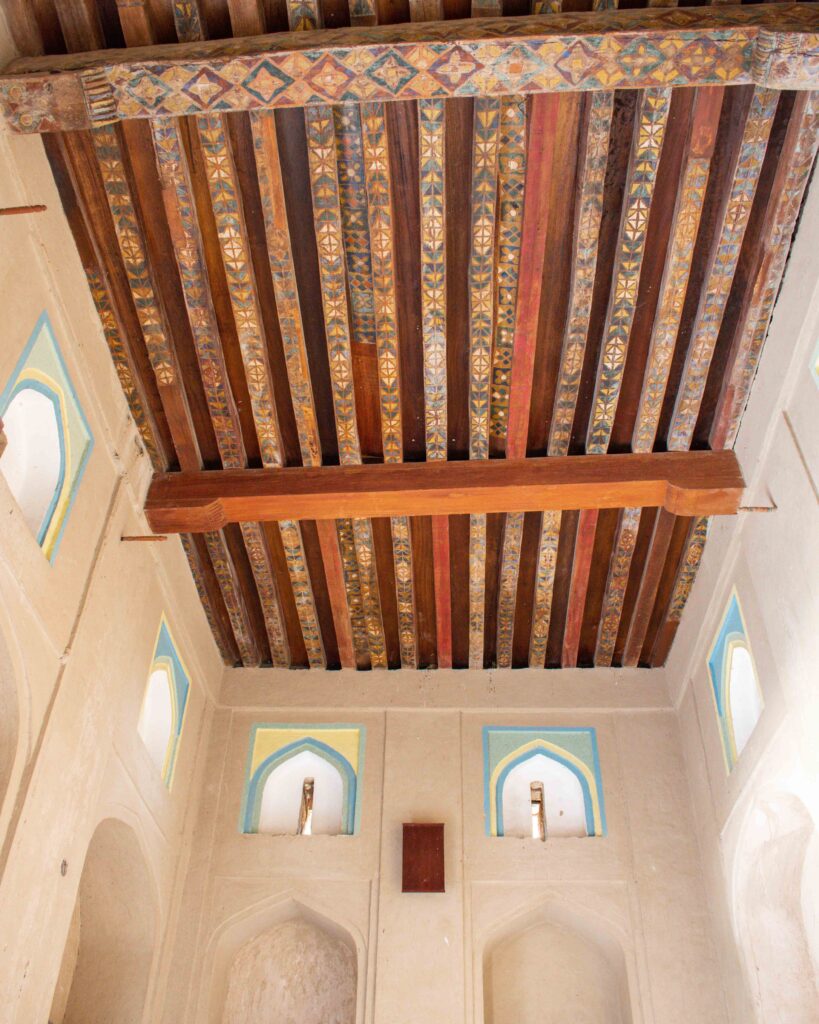
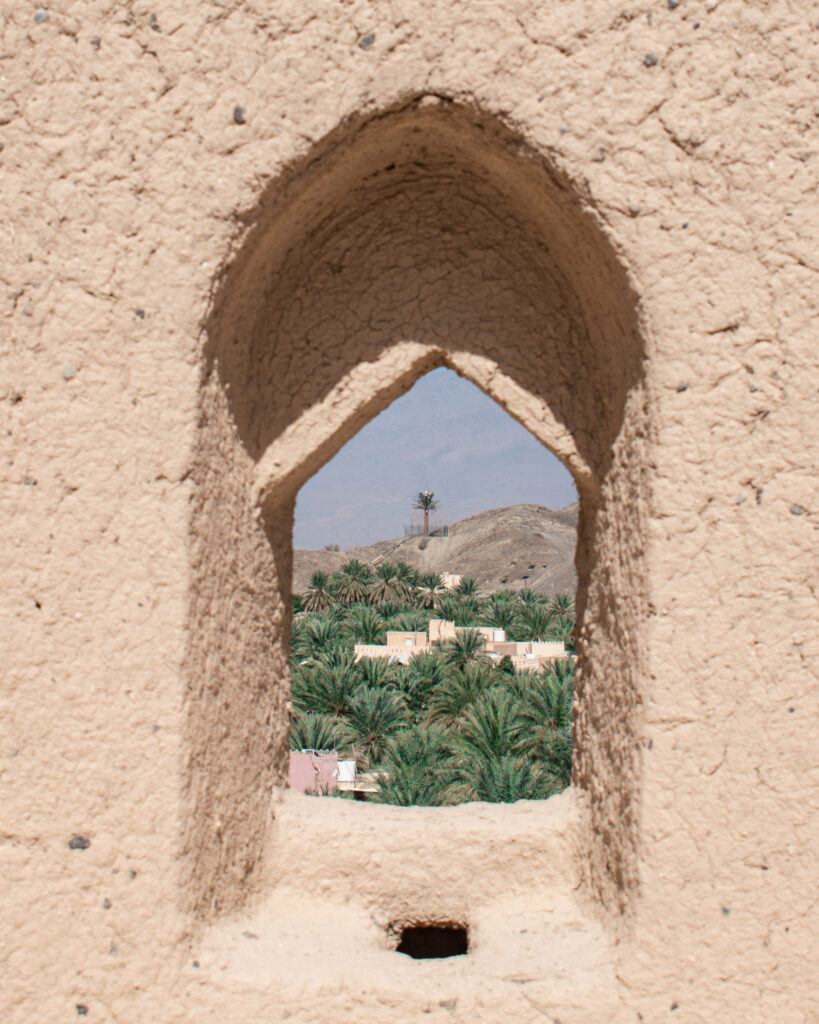
DAY 7
JEBEL SHAMS (OR AL AIN BEEHIVE TOMBS)
Distance: 42 miles/67 km
The road to Jebel Shams is mostly tarmac until the Jebel Shams Resort, apart from a small section of around 5 miles/8km. Inexplicably this short stretch of dirt road, is between two tarmacked sections! This short strip of dirt road can be manageable if taken gently in a 2WD if weather conditions have been good. This section of road is well compacted, and not too steep or narrow. The road on from the viewpoint however, to the start of the Balcony Walk, is also dirt track, but much softer. I personally would be very wary about attempting that section in a 2WD.
If you are not confident on the more compacted dirt track, you might want to instead head to Al Ain Beehive Tombs and Wadi Damm. Both are accessible by 2WD – although you will need to walk a little further from where you can park, than the coordinates provided above in the 4WD itinerary.
Alternatively, you could arrange with one of the hotels on Jebel Akhdar for pick up from Nizwa or the bottom of the mountain near the police check point, and spend Day 6/7 up on the Green Mountain.
Accommodation: Jebel Shams offers possibly the best camping in Oman. Head just beyond Jebel shams Resort for the best spots. In a 2WD, you will most likely need to park at the side of the road and carry your kit across the rocky ground, if you want to camp close the edge of the canyon. There are only a couple of hotels up here, but we have found them to be very disappointing. Given how amazing the camping is, I really recommend sticking to your tent for this night’s sleep.
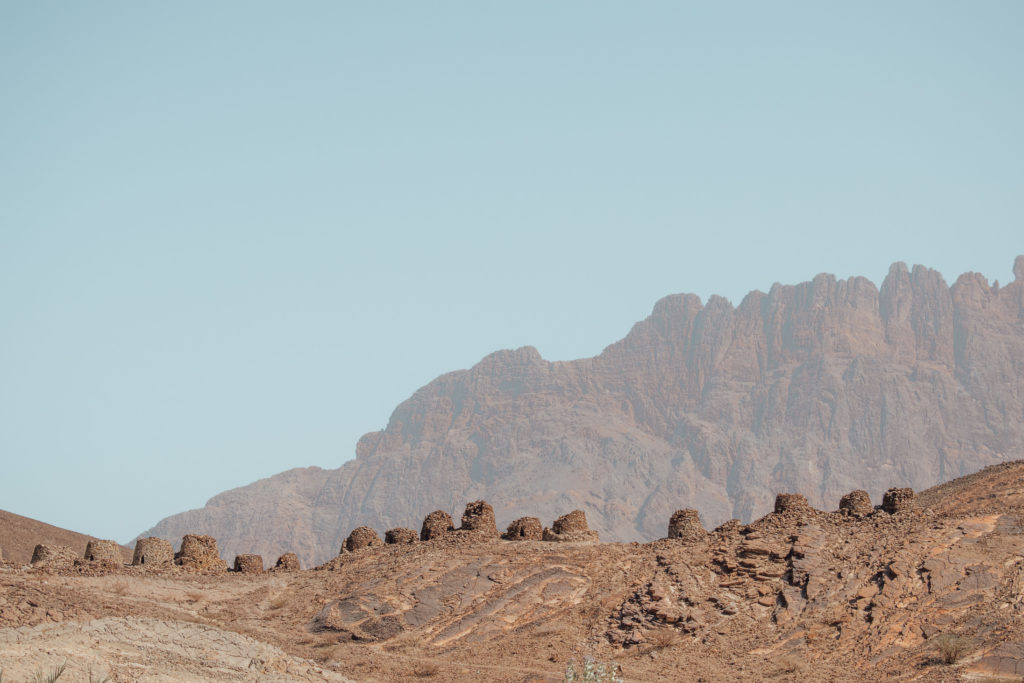
DAY 8
AL HAMRA AND MISFAT AL ABRIYYIN
Distance: 39 miles/62 km
Head back down Jebel Shams the way you went up yesterday, via the tarmacked road and spend the day exploring the Old Town of Al Hamra and the lovely village of Misfat al Abriyyin.
Al Hamra is one of the oldest settlements in Oman. The abandoned old quarter has a collection of well-preserved two- and three-storey mud-brick houses built in the Yemeni style. Be cautious whilst exploring – not all are structurally sound.
The picturesque village of Misfat al Abriyyin is located on the foothills of the mountains above Al Hamra. There are two lovely, very gentle, walks at either end of the village, which take you through the date plantation, along the falaj system. Routes are marked by the familiar yellow, green and red flag that marks most hiking tracks in Oman. Be sure to stick to the paths to avoid straying onto private property, or damaging crops. As it is one of the few mountain villages accessible by 2WD, Misfat has become a very popular tourist destination in recent years, so try to avoid the weekends if you can.
Accommodation: As everywhere in Oman, there are plenty of places to pull off the road, away from Al Hamra, to camp. However, as it is more built up, I recommend instead spending the night in a hotel or guesthouse. Two of my favourites in Oman are on offer here: The View or Misfah Old House. The road to The View is dirt track, not tarmac, but fine in a 2WD.
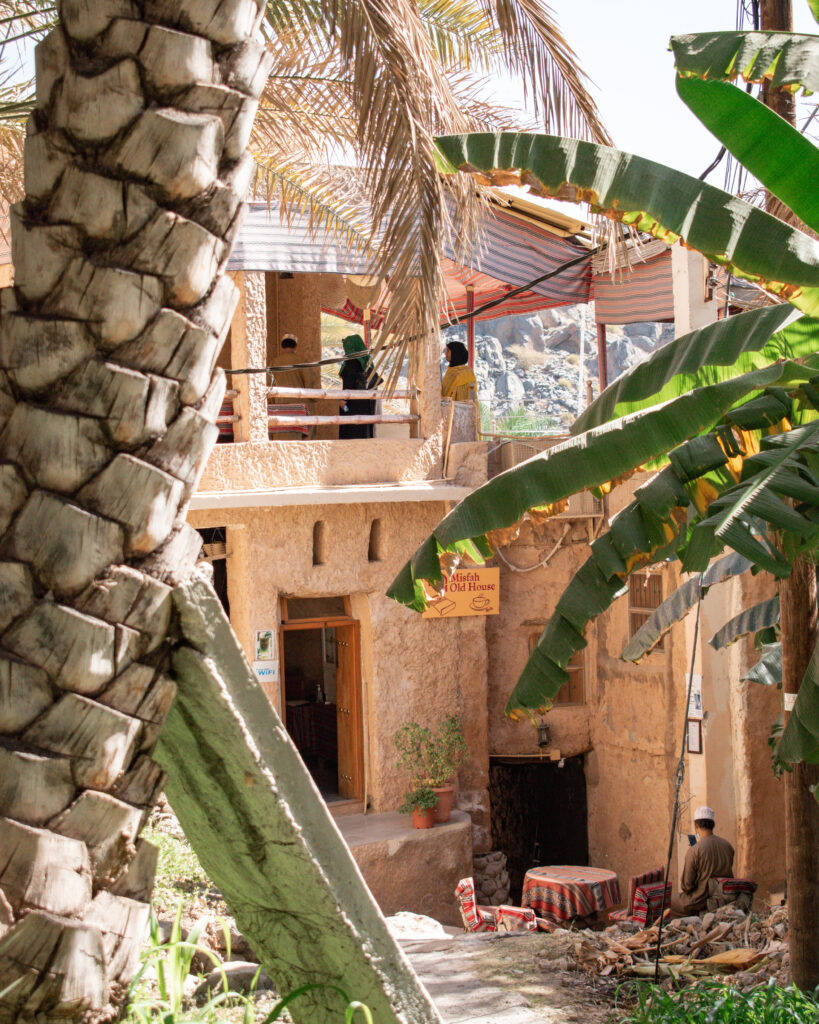
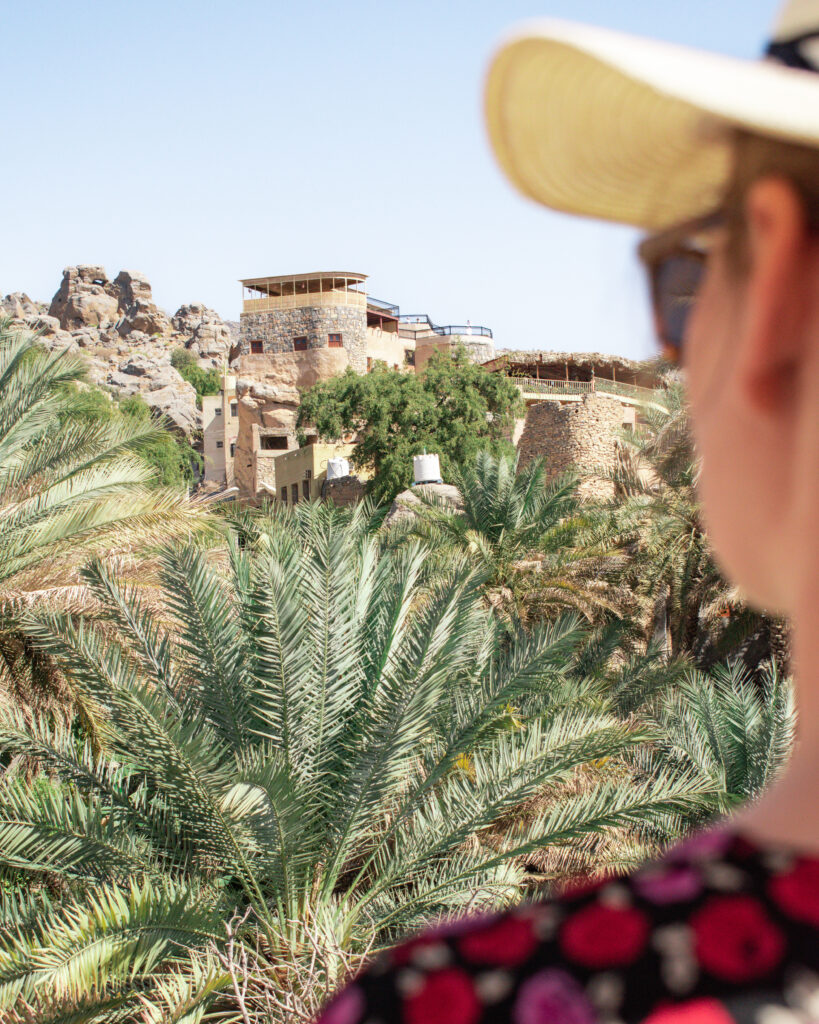

DAY 9
BACK TO MUSCAT
Distance: 129 miles/208 km
Time to return to Muscat. Stop at the popular Birkat Al Mouz on the way back to Muscat, for a coffee, slice of cake and wander around the old ruined village to stretch your legs.
Accommodation: overnight in a Muscat hotel. Consider treating yourself to a night in the luxurious The Chedi or beachfront Al Bustan Palace for the ultimate splurge to end your trip on a luxurious high!
DAY 10
MUSCAT
Distance: minimal, city driving.
For your final morning in Muscat, visit the beautiful Sultan Qaboos Grand Mosque before an afternoon or evening flight home. Note that the Mosque is closed to non-Muslims on Friday, so depending on your travel days you may wish to add an extra day in Muscat at the start of your trip to visit instead.
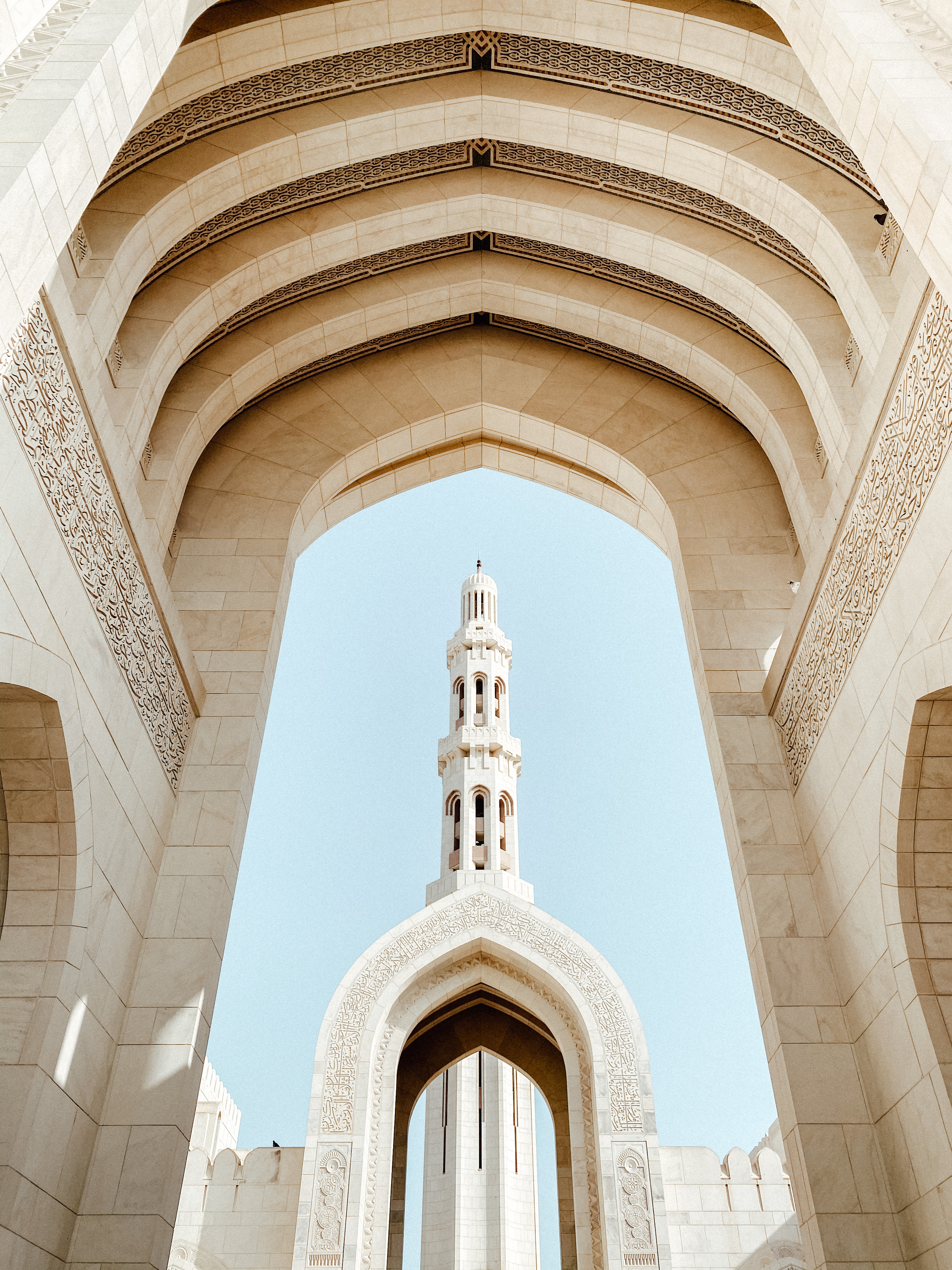
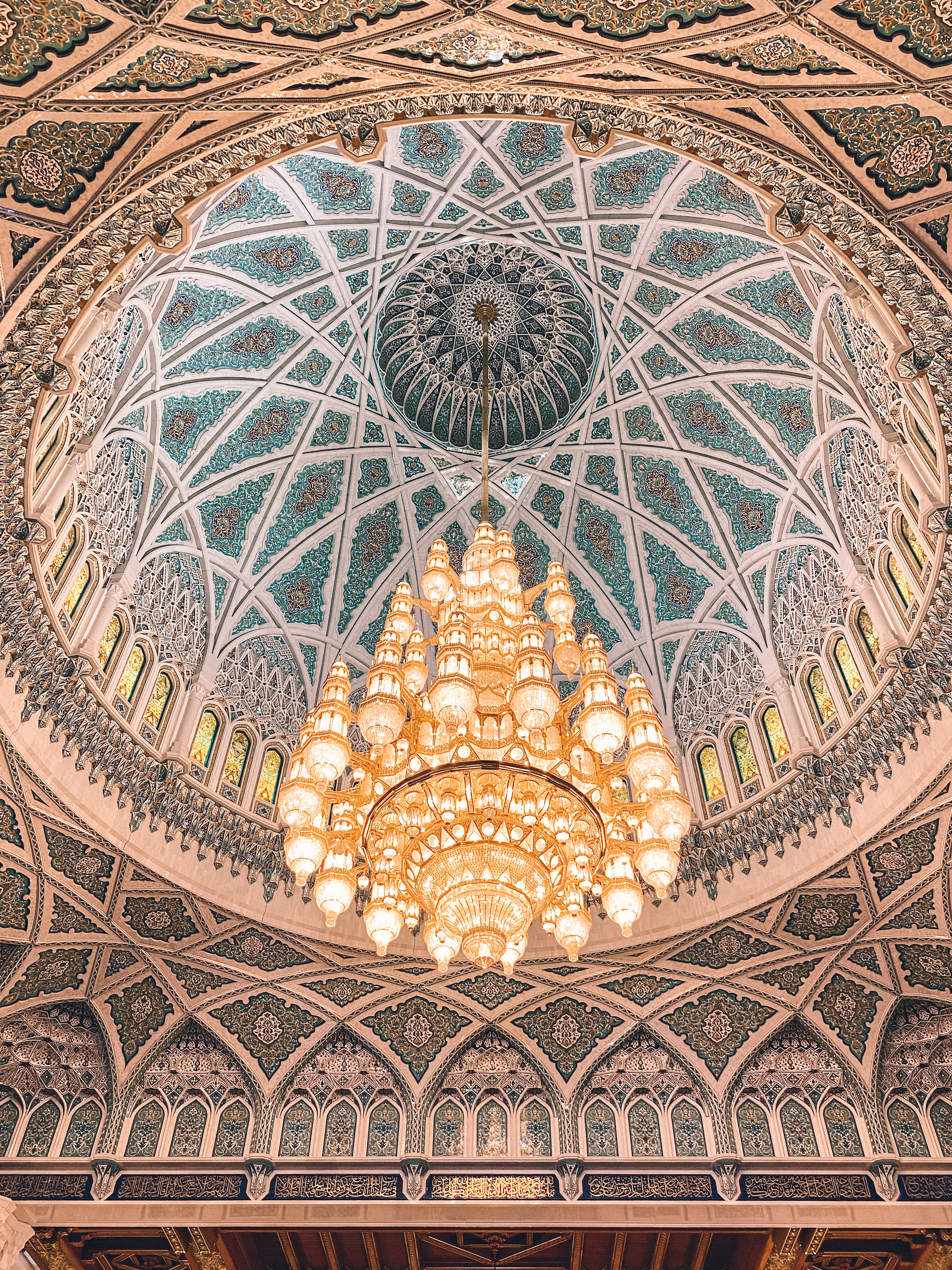
MORE TIME TO EXPLORE?
If you have more than ten days in Oman, there are plenty of additions you could make the above road trip itineraries. Or of course, you could pick and choose from the below and the above suggestions, to build your own personalised trip. These are just a few of my top picks, for other areas to explore:
Daymaniyat Islands – only a short 45 minute boat ride from Muscat, this archipelago of white sand islands has become known as the “Maldives of Oman” for its crystal clear waters and underwater opportunities. A permit is required to visit, as the islands and the waters around are a protected nature reserve. If you are in Oman during whale shark season (July-September) a visit is an absolute must do, for the once in a lifetime chance to swim with these gentle maritime giants. Check out my guide to the Daymaniyats for more information.
Wakan Village in blossom season – if you are here in the Spring, head to the mountain village of Wakan in the Western Hajar to see the pomegranate and apricot blossom and hike the national trekking routes around the village – W25 and W24a. This route is one of my favourites in Oman, being one of the most varied and with epic views back down the valley. You can find my full guide here. Other top floral picks include visiting the rose harvest on Jebel Akhdar. Every year, from mid-March to mid-April, Jebel Akhdar erupts into pink as 7,000 blooming damask roses cover the mountain. Local farmers harvest almost twenty-four hours a day before turned the roses into one of Oman’s most well-known exports – rose water. You can visit independently – just follow the route of the W18b trail – or book a tour. The hotels on Jebel Akhdar can also organise excursions.
More adventurous off road routes – such as exploring the Sugar Dunes, crossing the Wahiba Desert or exploring the Empty Quarter. All of these routes certainly require a 4WD and need a convoy of more than one vehicle to be attempted safely. Check out my detailed guide to Oman’s top off road routes for ideas.
Dhofar and Salalah – the south of Oman is a very different to the north of the country. Between July and September this part of Oman is covered in mist and jungle-like greenery thanks to the monsoon rains from across the Indian Ocean. This spectacular transformation is still relatively unknown outside of the Gulf region, but is a memorable sight amongst the usually parched landscapes of the Arabian Peninsula. During the winter months, Salalah is also home to some of the best beaches to visit in Oman.
Musandam – separated from the rest of Oman by the UAE, this Omani enclave sits on the southern side of the strategically critical Strait of Hormuz. It has gained the moniker “the Norway of Arabia” for its rocky inlets and dramatic cliffs above turquoise waters. You will need a 4WD to get up into the mountains, but a 2WD will take you along the western coastline. Musandam is also a good excursion from the UAE, being closer to Dubai than Muscat. Be sure to also check out my guides to the UAE if you are thinking of planning a wider regional visit.
There are lots more guides to explore to help you plan your road trip around Oman – and the rest of the Middle East – across the website, but if you have a specific question let me know in the comments below and I am more than happy to help!




Leave a Reply